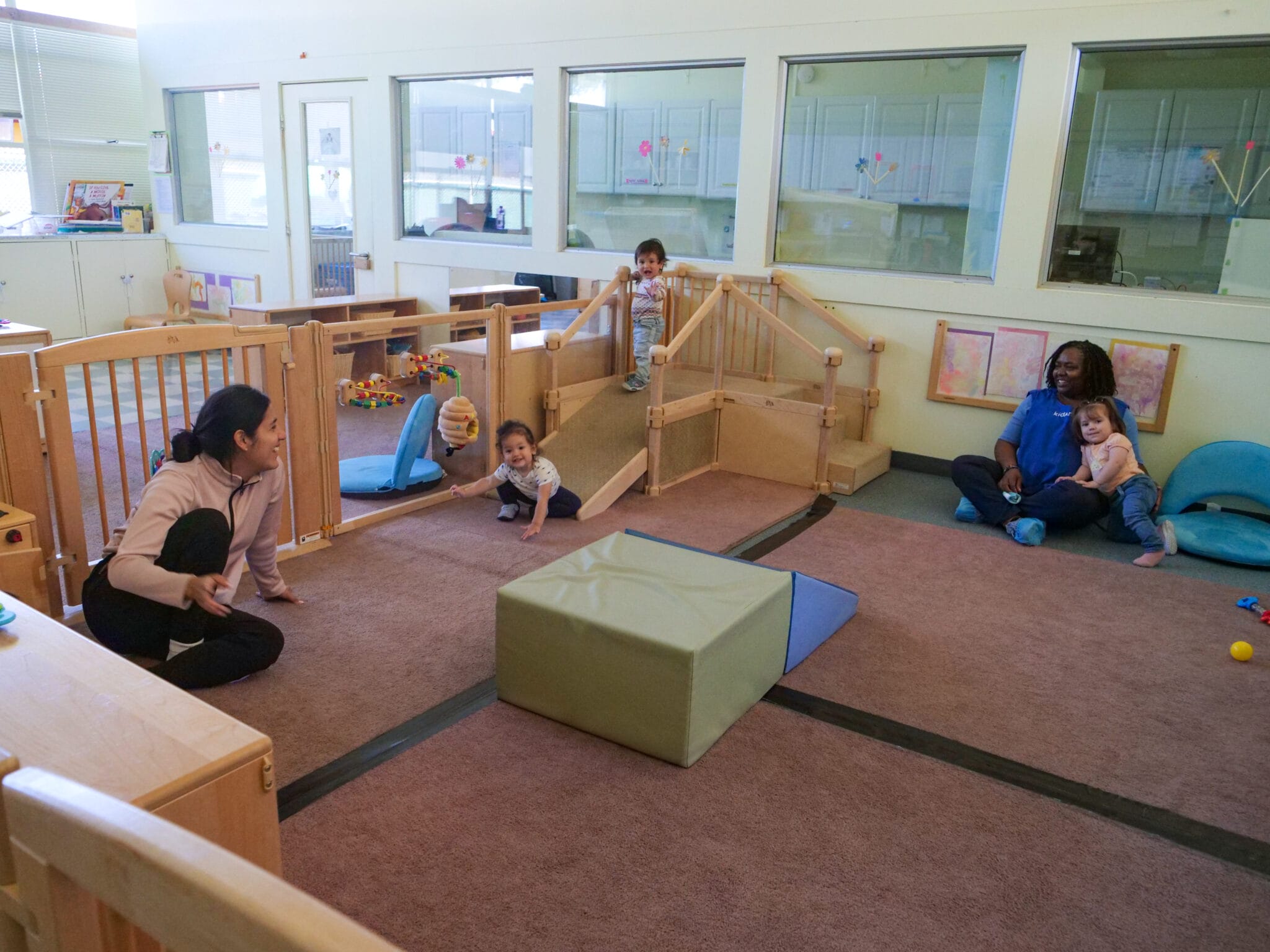President Joe Biden’s plan for a 21st-century caregiving and education workforce is ambitious, particularly as it applies to its early care and education component (Biden For President, 2021). As proposed, the plan would represent an advance for America’s early care and education (ECE) system, which has long been characterized by severe underfunding, inequitable access for children and families, and the abhorrent treatment of the workers (mostly women) who care for and educate the nation’s children. Yet, these efforts must be even bolder.
The plan draws upon a pre-pandemic assessment of the ECE system and its limitations. Those times are past. Even with growing recognition that ECE is a critical component of the nation’s infrastructure, we are witnessing the near collapse of the system in the wake of COVID-19. More than 150,000 early childhood jobs have been lost (BLS Data Viewer, 2020), and those who continue to work are often doing so without the protective equipment they need (Doocy et al., 2020). As many as 4.5 million child care spaces may be permanently lost (Jessen-Howard & Workman, 2020), and the cost to provide services has only increased (Workman & Jessen-Howard, 2020). As a result, the inequities experienced by children, parents, and early educators who are Black, Latinx, immigrants, and other people of color have deepened and become more visible.
In a post-pandemic world, which seems within reach, there is no going back to mend the ECE system we once had. That system was built on the backs of millions of women providing the services and the poverty-level wages paid to them: it requires a complete dismantling. To achieve his stated goals of treating the underpaid, undervalued, and too often unseen workforce with dignity and enabling the workforce to secure fundamental rights and protections, President Biden’s plan will need to build the system anew.
COVID-19 and the racial reckoning led by Black Lives Matter compel us to confront the systemic racism and misogyny woven throughout our institutions. And early care and education is no exception. As a system that relies primarily on a market-based structure, by definition it disadvantages those with the least means to purchase services. As services are tied to buying power, the wages of early educators, primarily women, are directly tied to the ability of families to pay (CSCCE, 2020b). Across different types of settings and job roles in the sector, we see that the wages of Black women, in particular, are systematically lower than those of their peers undertaking the same work (Austin, et al., 2020). Additionally, throughout the sector we have documented the poor working conditions that too many early educators experience (Schlieber & McLean, 2020). Any new model of early care and education in this country must be driven by rectifying the stress on families with little-to-no access to high-quality ECE and the ongoing exploitation of early educators’ hard work and dedication.
Key areas of the plan merit reconsideration, including:
Financing
The $775 billion over 10 years proposed to cover the costs of the reform is insufficient to meet the stated goal of funding the true cost of quality care:
- $450 billion is earmarked for elder care, which leaves $325 billion for early care and education, or $32.5 billion a year. This is approximately one-third of the amount needed to adequately fund ECE operations per year (not including infrastructure investments associated with reform), according to estimates from the National Women’s Law Center (Ullrich et al., 2020).
- Estimates for a fully phased-in ECE system range significantly, based on assumptions about compensation and benefits for the workforce and amount of services for children. Yet, even when we account for new spending and the existing public spending on ECE, the totals far exceed what would be available under this proposal. For example, the National Academy of Sciences report, Transforming the Financing of Early Care and Education, estimated the costs of a system for children birth to age five at $140 billion per year (NASEM, 2018). Economists with the Economic Policy Institute (EPI) estimated “an annual investment in the range of $337 to $495 billion, serving between 11.5 and 16.0 million children,” a figure that accounted for wage and benefit parity with elementary school teachers, appropriate working conditions, and upskilling the existing ECE workforce (Gould & Blair, 2020).
Innovation
The goals and strategies for ECE should be aligned with innovations outlined in the proposal for the workforce serving elders and those with disabilities. Specifically, we propose establishing:
- A state innovation fund to allow the development and testing of innovative models to fund services as a public good and to pay educators just and fair wages, rather than relying on market-based mechanisms like tax credits and vouchers that do not allow for direct improvements to wages and benefits.
- A national strategy to recruit, retain, and empower early education professionals that addresses burnout, recruitment, and retention. Furthermore, similar to the Biden proposal to address diversity among the nursing profession, attention to maintaining or extending the diversity of the ECE workforce while simultaneously dismantling racial job stratification and racial wage gaps is necessary.
- An early care and education jobs corps to address the urgent, multifaceted needs of children, families, and educators during the pandemic and in its aftermath. The corps would build a longer-term infrastructure to attract and deploy professionals to work with young children.
Preschool-Child Care Dichotomy
Providing all three- and four-year-olds access to free, high-quality pre-kindergarten, while maintaining child care for infants and toddlers and wraparound services as fee-based services for purchase, will further destabilize the ECE delivery system. Doing so will deepen the racial stratification, pay gaps, differential working conditions, and professional development opportunities between child care and publicly funded preschool. For example, research has shown that the lowest-paying caregiving and teaching jobs in the sector are those that involve working with infants and toddlers, and Black early educators are more likely than their peers to work with infants and toddlers (Whitebook, 2019). Furthermore, Black early educators are underrepresented in school-based public preschool teaching positions, which are on average the highest-paid jobs among this workforce (CSCCE, 2020a).
- The Biden proposal would essentially expand the current child care system as it is structured, increasing access to subsidies on the child care side and making it more affordable for families but without necessarily improving salaries for early educators. Without direct contracts to programs that guarantee appropriate funding levels, these strategies will never provide the stability programs need in order to commit to paying reliable, livable wages because they attach funding to individual children who may disenroll at any point.
- By funding child care and preschool differently and by placing greater value on preschool as a fully funded public good, the proposal signals that education and care are divorced from one another and that education is more important than care, even as we are witnessing the essential role of child care in our national infrastructure during COVID-19. Furthermore, this distinction between care and education runs counter to scientific evidence about how and when children learn.
- Providing free care and education would arguably improve the economic security of families and support gender equity in the labor force, given that women are more likely to reduce their hours or drop out of the paid labor force due to inadequate access to ECE (Malik & Morrissey, 2020). Since February 2020, women have lost more than 5.5 million net jobs (Ewing-Nelson, 2020). Many of these job losses have been attributed to the cost of child care and its scarcity during the pandemic.
Worker Supports
A full proposal will require details about how pay increases will be accomplished. Based on the proposal thus far, as well as our historical and current knowledge of compensation in ECE, we offer the following recommendations to those crafting the plan:
- It is necessary to understand that many pay penalties stem from where and how services are delivered. For example, there is not only a pay penalty for working with younger children, “child care” compared to public preschool, but within publicly funded preschool, there are wage and benefit penalties for those working in community-located programs, compared to those working in school-based settings, even within the same public preschool system (Whitebook et al., 2018).
- Currently, outside of school-based programs, there is no vehicle for ensuring equity in benefits, unless a dedicated health care and retirement fund is created for members of the early care and education workforce.
- To address the substandard working conditions that extend beyond compensation, implement model work environment standards for the sector that reflect the conditions and workplace practices that should be provided to early educators.
- Given the challenges in unionizing early educators due to the current structure of the industry, creating mechanisms to establish sectoral bargaining should be explored as a vehicle to secure well-articulated health, safety, and working condition standards.
Facilities
The proposal must address the unequal distribution and safety of facilities among different communities and types of employers. Incentivizing employers to build facilities via tax credits will privilege those employers and corporate child care providers typically serving the families of high-income workers. A New Deal infrastructure investment is needed not only to increase the number of community-based facilities, but to also be available to home-based and small private centers that need repairs, remodeling, and improved ventilation, particularly in light of COVID-19 (Waters, 2020).
In Closing
We know that President Biden, Vice President Harris, and the teams they are assembling care about racial and gender equity. And we also know that given the complexities of the ECE landscape, they may still be learning the depth and breadth of the ways in which the current structures harm early educators. We wholeheartedly support Biden’s pledge to “treat caregivers and early childhood educators with respect and dignity, and give them the pay and benefits they deserve, training and career ladders to higher-paying jobs, the choice to join a union and bargain collectively, and other fundamental work-related rights and protections” (Biden For President, 2021). But we cannot have a functional early care and education system until we have the policies and funding to ensure that educators across the sector earn fair compensation and gain the economic security they deserve. Thus, we urge the architects of any new proposal for ECE in 21st-century America to undertake foundational reform that breaks the cycle of inequities and harm that have been imposed on early educators. This reform is essential for our educators, children, families, and yes, our economy.
References
Austin, L.J.E., Edwards, B., Chavez, R., & Whitebook, M. (2020). Racial Wage Gaps in Early Education Employment. Berkeley, CA: Center for the Study of Child Care Employment, University of California, Berkeley. Retrieved from https://cscce.berkeley.edu/racial-wage-gaps-in-early-education-employment/.
Biden For President (2021). “The Biden Plan for Mobilizing American Talent and Heart to Create a 21st Century Caregiving and Education Workforce.” Retrieved from https://joebiden.com/caregiving/.
BLS Data Viewer (Version CES6562440010) (2020). Employment, Hours, and Earnings from the Current Employment Statistics survey (National). U.S. Bureau of Labor Statistics. Retrieved January 04, 2021, from https://beta.bls.gov/dataViewer/view/timeseries/CES6562440010.
Center for the Study of Child Care Employment (CSCCE) (2020a). Analysis of Black early educators’ wages utilizing the 2012 National Survey of Early Care and Education (NSECE) data. Unpublished raw data.
Center for the Study of Child Care Employment (CSCCE) (2020b). Why do parents pay so much for child care when early educators earn so little? Berkeley, CA: Center for the Study of Child Care Employment, University of California, Berkeley. Retrieved from https://cscce.berkeley.edu/why-do-parents-pay-so-much-for-child-care-when-early-educators-earn-so-little/.
Doocy, S., Kim, Y., & Montoya, E. (2020). California Child Care in Crisis: The Escalating Impacts of COVID-19 as California Reopens. Berkeley, CA: Center for the Study of Child Care Employment, University of California, Berkeley. Retrieved from https://cscce.berkeley.edu/california-child-care-in-crisis-covid-19/.
Ewing-Nelson, C. (2020). Nearly 2.2 Million Women Have Left the Labor Force Since February. Washington, DC: National Women’s Law Center. Retrieved from https://nwlc.org/wp-content/uploads/2020/11/October-Jobs-Day.pdf.
Gould, E., & Blair, H. (2020). Who’s paying now?: The explicit and implicit costs of the current early care and education system. Washington, DC: Economic Policy Institute. Retrieved from https://www.epi.org/publication/whos-paying-now-costs-of-the-current-ece-system/.
Jessen-Howard, S., & Workman, S. (2020). Coronavirus Pandemic Could Lead to Permanent Loss of Nearly 4.5 Million Child Care Slots. Washington, DC: Center for American Progress. Retrieved from https://www.americanprogress.org/issues/early-childhood/news/2020/04/24/483817/coronavirus-pandemic-lead-permanent-loss-nearly-4-5-million-child-care-slots/.
Malik, R., & Morrissey, T. (2020). The COVID-19 Pandemic Is Forcing Millennial Mothers Out of the Workforce. Washington, DC: Center for American Progress. Retrieved from https://www.americanprogress.org/issues/early-childhood/news/2020/08/12/489178/covid-19-pandemic-forcing-millennial-mothers-workforce/.
National Academies of Sciences, Engineering, and Medicine (NASEM) (2018). Transforming the Financing of Early Care and Education. Washington, DC: The National Academies Press. Retrieved from https://doi.org/10.17226/24984.
Schlieber, M., & McLean, C. (2020). Educator Work Environments Are Children’s Learning Environments: How and Why They Should Be Improved. Berkeley, CA: Center for the Study of Child Care Employment, University of California, Berkeley. Retrieved from https://cscce.berkeley.edu/educator-work-environments-are-childrens-learning-environments-how-and-why-they-should-be-improved/.
Ullrich, R., Sojourner, A., Gallagher Robbins, K., Schmit, S., Schulman, K., & White, C. (April 2020). Child Care Is Key to Our Economic Recovery What it will take to stabilize the system during the coronavirus crisis. Washington, DC: Center for Law and Social Policy and National Women’s Law Center. Retrieved from https://nwlc.org/wp-content/uploads/2020/04/CCKeytoEconomicRecoveryNWLC.pdf.
Waters, J. (2020). How to save child care? The rural electrification of America provides an answer. Washington, DC: The Hill. Retrieved from https://thehill.com/blogs/congress-blog/politics/507400-how-to-save-child-care-the-rural-electrification-of-america.
Whitebook, M. (2019). A Bizarro World for Infants and Toddlers and Their Teachers. Occasional Paper Series, 2019 (42). Retrieved from https://educate.bankstreet.edu/cgi/viewcontent.cgi?article=1335&context=occasional-paper-series.
Whitebook, M., McLean, C., Austin, L. J. E., & Edwards, B. (2018). The Early Childhood Workforce Index 2018. Berkeley, CA: Center for the Study of Child Care Employment, University of California, Berkeley. Retrieved from https://cscce.berkeley.edu/projects/early-childhood-workforce-index-2018/.
Workman, S., & Jessen-Howard, S. (2020). The True Cost of Providing Safe Child Care During the Coronavirus Pandemic. Washington, DC: Center for American Progress. Retrieved from https://www.americanprogress.org/issues/early-childhood/reports/2020/09/03/489900/true-cost-providing-safe-child-care-coronavirus-pandemic/.
Suggested Citation
Austin, L.J.E., Whitebook, M., & Williams, A. (2021). Early Care and Education Is in Crisis: Biden Can Intervene. Berkeley, CA: Center for the Study of Child Care Employment, University of California, Berkeley. https://cscce.berkeley.edu/underfunded-and-broken-the-u-s-child-care-system
Acknowledgments
The paper was generously supported through grants from the Heising-Simons Foundation and the David and Lucile Packard Foundation.
The views expressed in this commentary are those of the authors and do not necessarily represent collaborating organizations or funders.
Additional Resource




